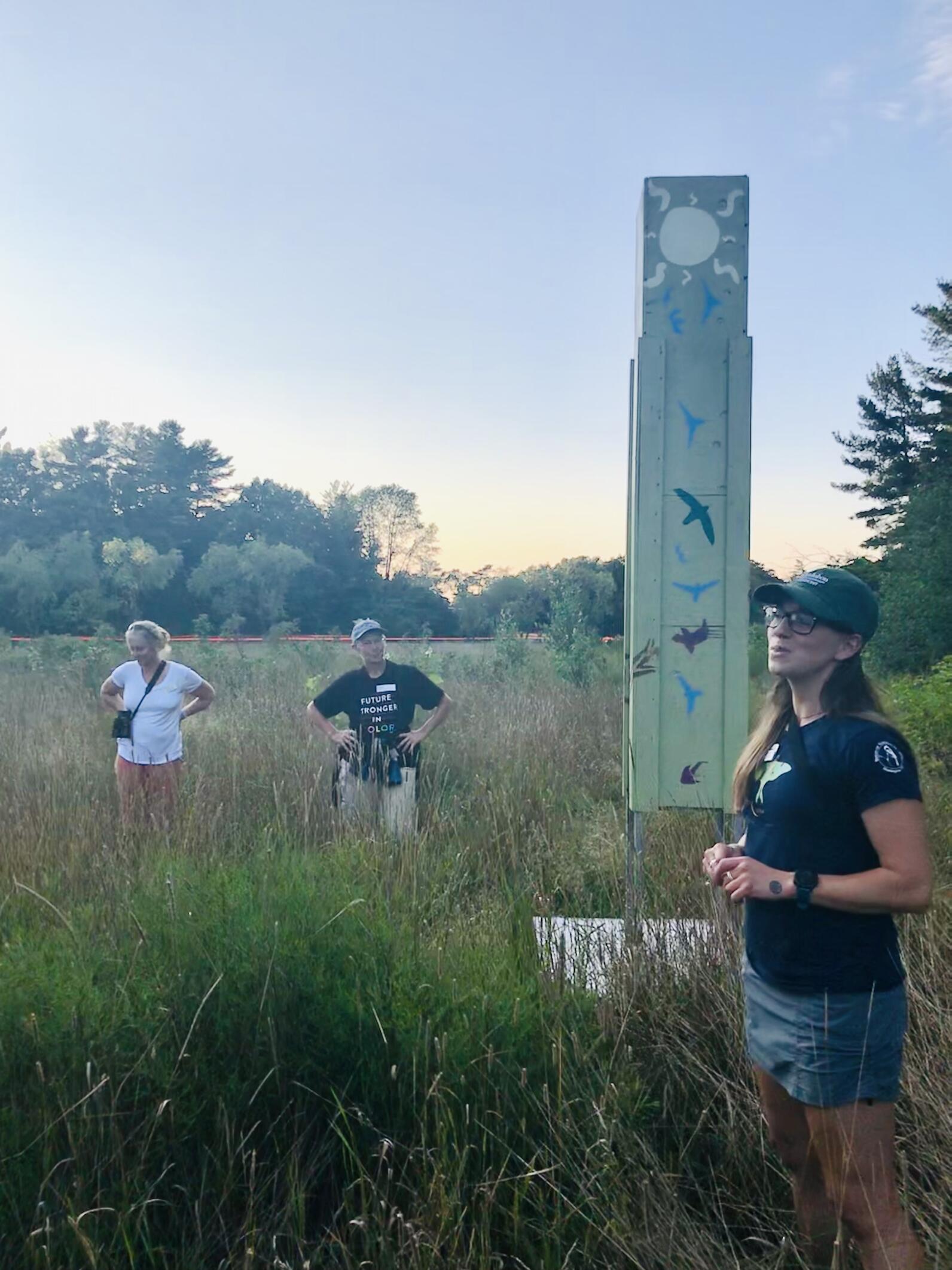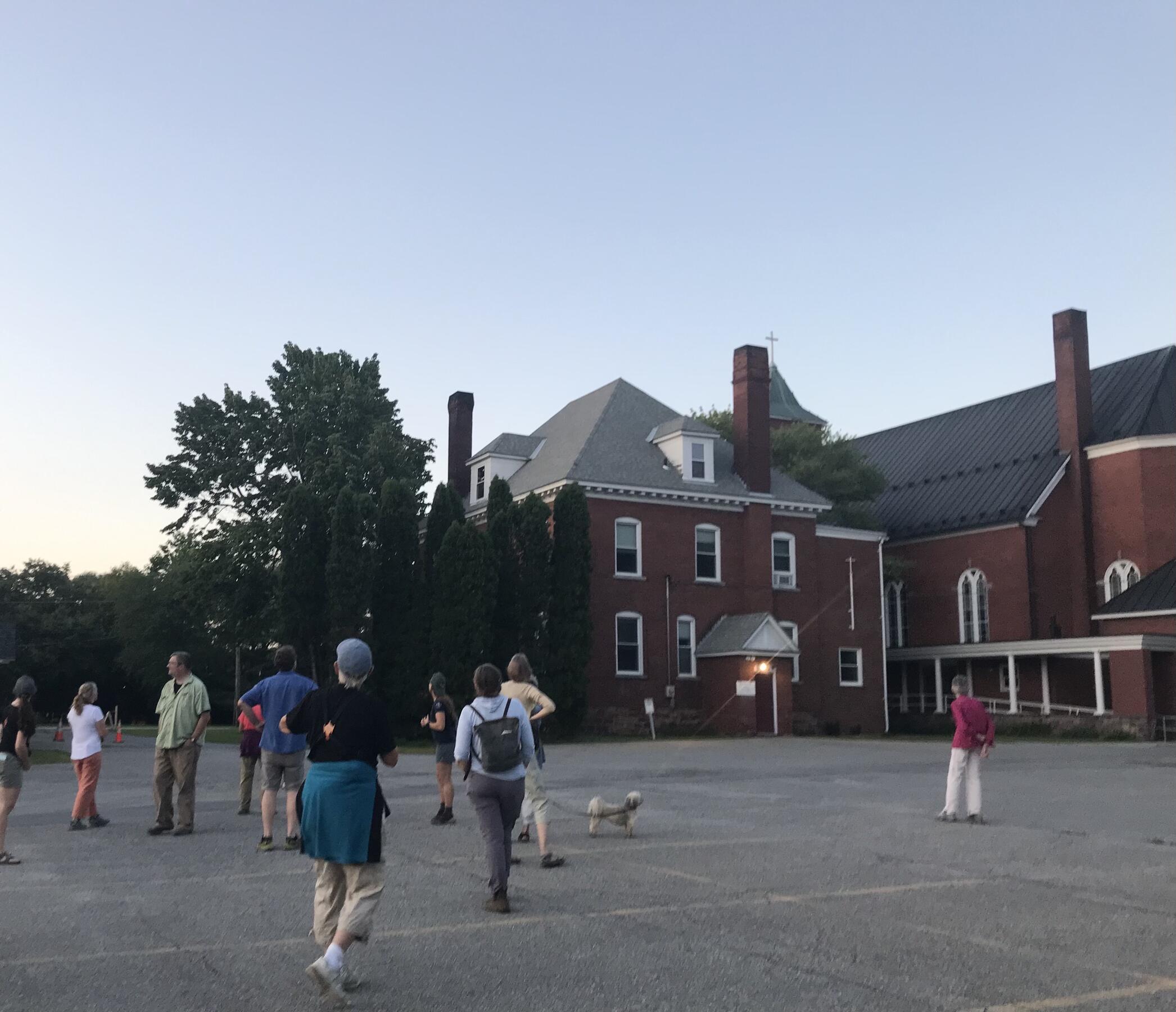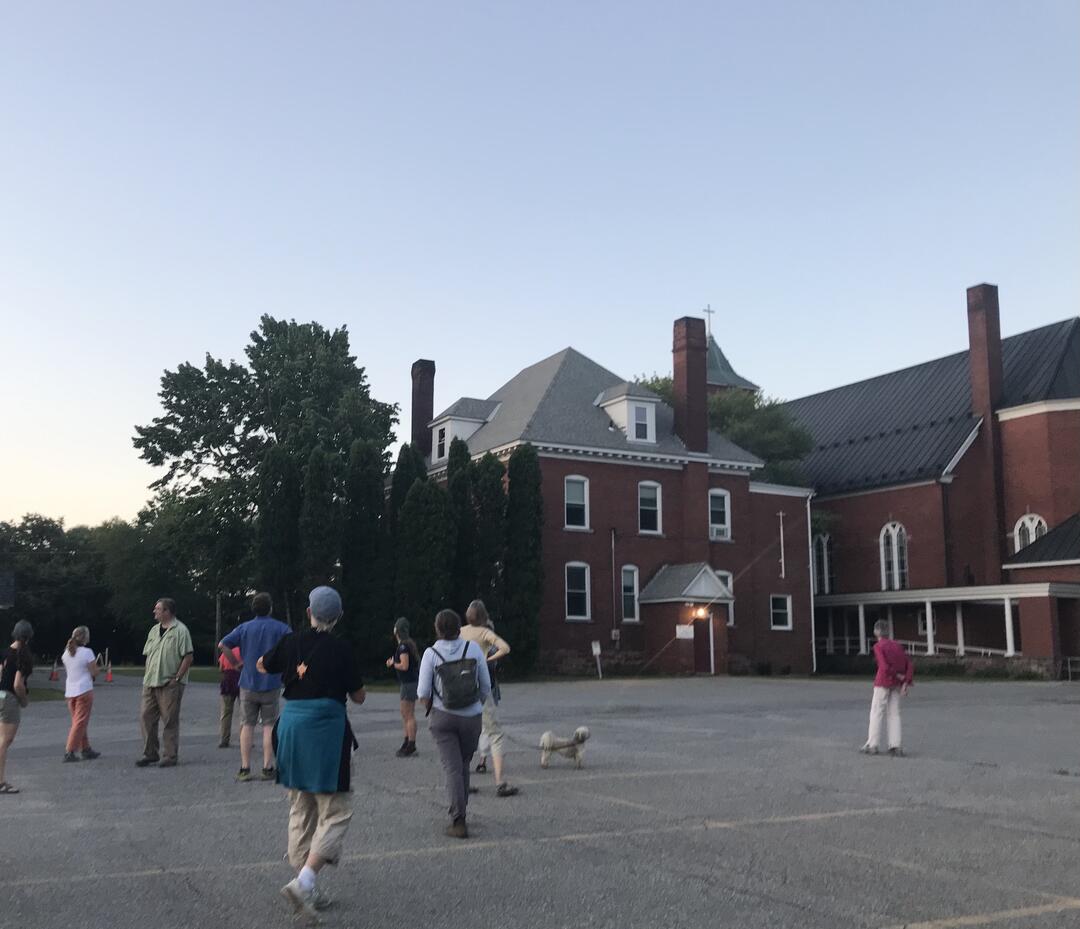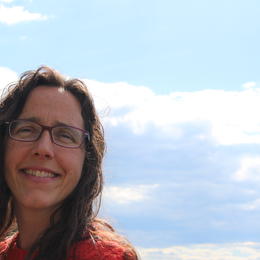This is the fourth year of our Chimney Swift Recovery Project. We need your help to locate their nesting sites and late-summer roosting sites to protect these important locations.
Chimney Swifts have returned to Vermont from their wintering sites in the Amazon basin of Peru, northern Chile, and northwest Brazil. Just before sunset is the perfect time to see them swooping into their nesting sites for the night. Groups of swifts can be identified by their high-pitched chattering calls and their swift, acrobatic flight patterns while they're feeding on insects in the air. For more information on how to identify Chimney Swifts by sight and sound and natural history information see the Audubon Field Guide or All About Birds.
Stay tuned for upcoming Swift Night Out events this summer in Burlington and Rutland.
Looking for a birding buddy?
We’ve got you covered! Join our Chimney Swift Birding Buddy Program
We recognize that safety in the outdoors while birding and monitoring is not equal for all of us. Birders in the BIPOC community, LGBTQIA+ birders, female-identifying birders, and birders with disabilities all face additional barriers to being safe and accessing opportunities to participate in Audubon's community science work.
We want to be sure that everyone is safe when out surveying for Chimney Swifts, especially since this year's monitoring protocol is focused on finding Chimney Swift nesting and roosting sites at dusk. If you are interested in participating in Chimney Swift monitoring, we recommend that you go out with a birding buddy.
Audubon Vermont is coordinating the matching of Chimney Swift monitoring birding buddies. You can either request a birding buddy or volunteer to be a birding buddy by filling out a brief online form to provide us with your name, email address, and town. When you request a birding buddy we will get you in contact with someone who has offered to join other birders in your area. We will not share this list with the public, but will reach out privately to individuals. Click here for more information or to sign up.
What Else Can I Do to Help Chimney Swifts?
- Keep masonry or clay flue-tile chimney tops open and dampers closed from March through October to provide the opportunity for Chimney Swifts to nest.
- Have your chimney cleaned in early March before the Chimney Swifts return from their winter home in South America.
- Metal chimneys should be permanently capped to prevent birds and other wildlife from becoming trapped.
- Email us at mfowle@audubon.org if you are interested in working with local conservation groups to construct Chimney Swift Towers in your area. Learn more about Chimney Swift Towers throughtout Vermont - click here.
- Educate your friends and neighbors about Chimney Swifts.







